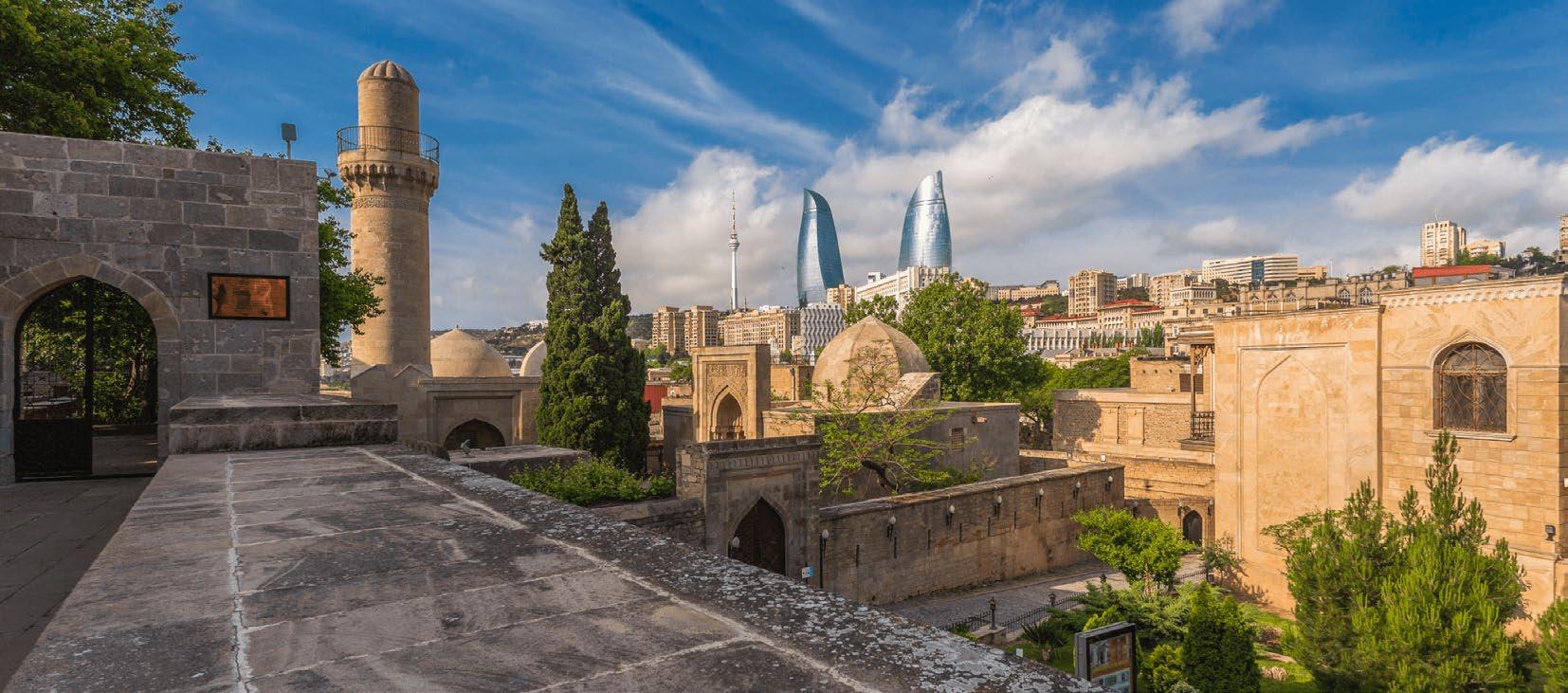
9 minute read
«TAKE ANOTHER LOOK!»
Azerbaijan covers 8 out of 11 climate types with almost every kind of geography one could think of, including hundreds of kilometres of sea.
One can also find the most amazing collection of mud volcanoes in the world, as well as ever-burning patches of hillside and many natural hot springs . Lemons and tea are grown in the subtropical south, while the north is dominated by the majestic Caucasus Mountains . All of this within such a small area and a few hours’ drive .
Advertisement
UNESCO HERITAGE
The country is home to three UNESCO heritage sites – Gobustan Rock Art Cultural Landscape, Icheri Sheher along with Shirvanshahs Palace and Maiden Tower, and historic Centre of Sheki with the Khan's Palace .
The mountains, which cover about 60% of the country, offer great opportunities for hiking in summer, and in winter the Shahdag and Tufandag ski resorts in the north are well-equipped with luxurious amenities and endless snowy vistas .
There are 16 hiking routes, passing through wild nature into mountain villages, treating every visitor to the astonishing views . One of the best parts of trips to the regions of Azerbaijan is how well the routes are planned as each hiking destination is close to a city, village or important sightseeing spot, making it easier to plan your post-hike programme . Hiking enthusiasts can find the GPS details for the hiking trails on international apps such as Wikiloc and ViewRanger . GOBUSTAN
Azerbaijan is home to about half of the world’s discovered mud volcanoes . Around 400 bubbling volcanoes are accessible in the Gobustan area . Volcanic clay and mud is believed to be useful in the treatment of diseases related to the nervous system, skin and rheumatism .
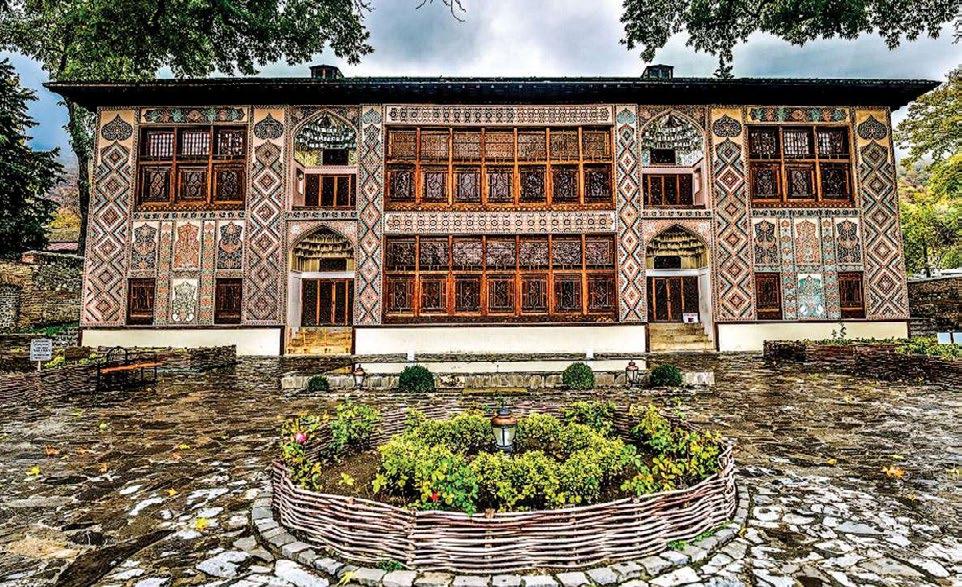
There’s also a fantastic golf club in Guba set in idyllic Azerbaijani countryside with a backdrop of the Caucasus Mountains . The club, which opened in September 2013, is a ruggedly beautiful site bordered by long grass and wild flowers with deep bunkers and a gently flowing creek. Designed by Jon Hunt of the UK-based International Golf Design Group, the club offers a world-class academy with expert PGA-qualified instructors and state-of-the-art assessment technology .
SHEKI & BASGAL
The legacy of the legendary Silk Road is notable in Sheki and the small mountain village of Basgal . The village is known for preserving the tradition of making ‘kelaghayi’, which is the traditional Azerbaijani silk headscarf . For a true nomadic experience, one should follow the route to the village of Khinalig, located on a mountain top 2,350 m above sea level in the Greater Caucasus Mountains . The unique structures of the old stone houses in the village stand as if they almost interweave with each other, turning into one landmark . The fire temple and mosques from the 12th and 15th centuries, as well as other local shrines, create unique scenery which is topped up with scenic mountain views .
WINTER TOURISM & HIKING
With the approach of winter, Shahdag, Tufandag and Agbulag Winter Resorts are welcoming everyone to their venues and fascinating views to the mountains . The resorts offer high-class hotels, spas, restaurants, as well as different thrilling sports and leisure activities . Here everyone from the beginner to professional skier can relish greatly groomed slopes, while non-skiers can also have fun choosing among a number of activities such as off-road tours, paragliding, cycling and cable car rides overlooking the majestic mountains .
With mountains accounting for over 60 percent of Azerbaijan’s total area, one can enjoy memorable moments hiking through the stunning scenery and stopping at timeless rural villages to witness local life . There are many popular-marked trails in the Greater and Lesser Caucasus Mountains, and some in the Talish Mountains in the south . 16 newly renovated hiking trails across the northern and north-western of Azerbaijan are unique and built in such a way that tourists can easily plan a post-hike trip to the closest cities, lakes, or various sightseeing places . Moreover, tourists get a chance to try local food whether they go for a hike, camping or when stopping by the village or closest town .
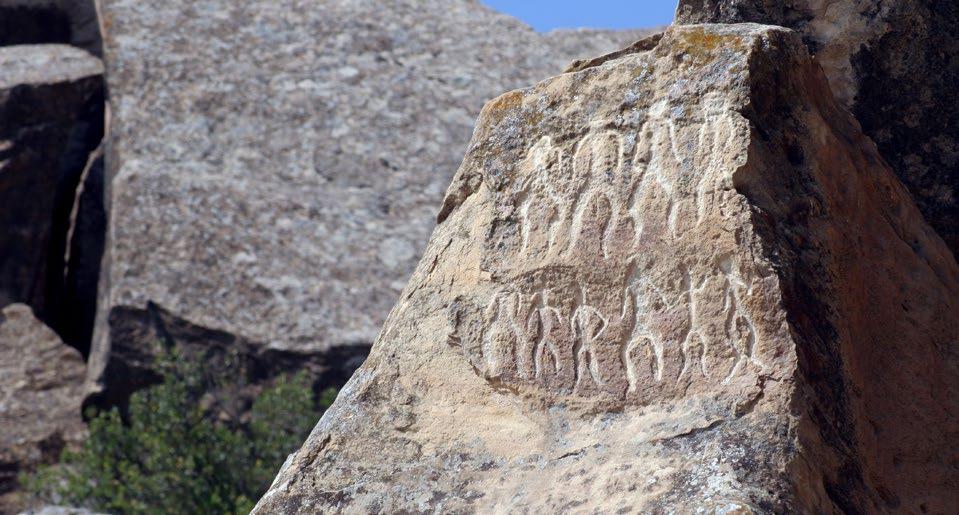

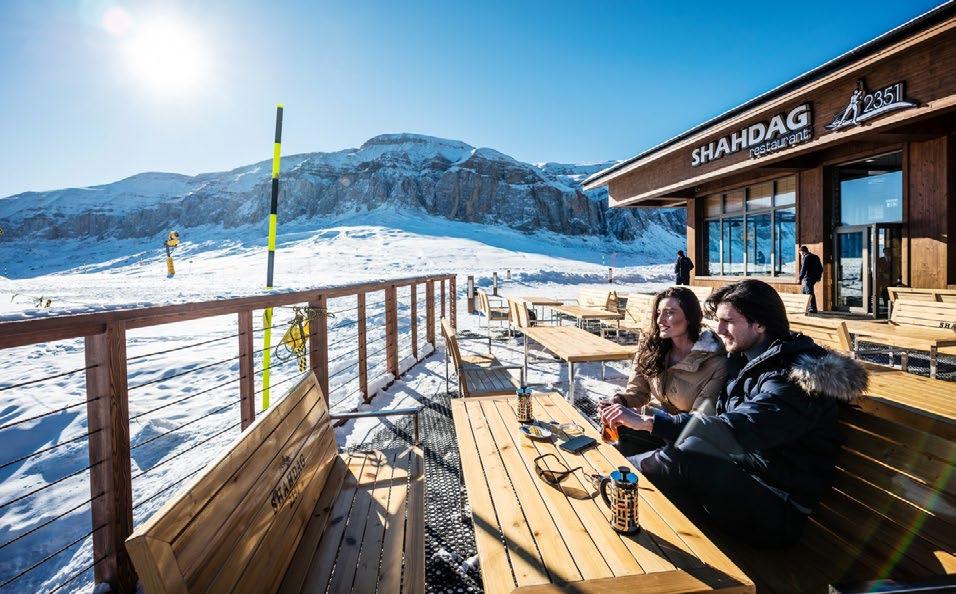
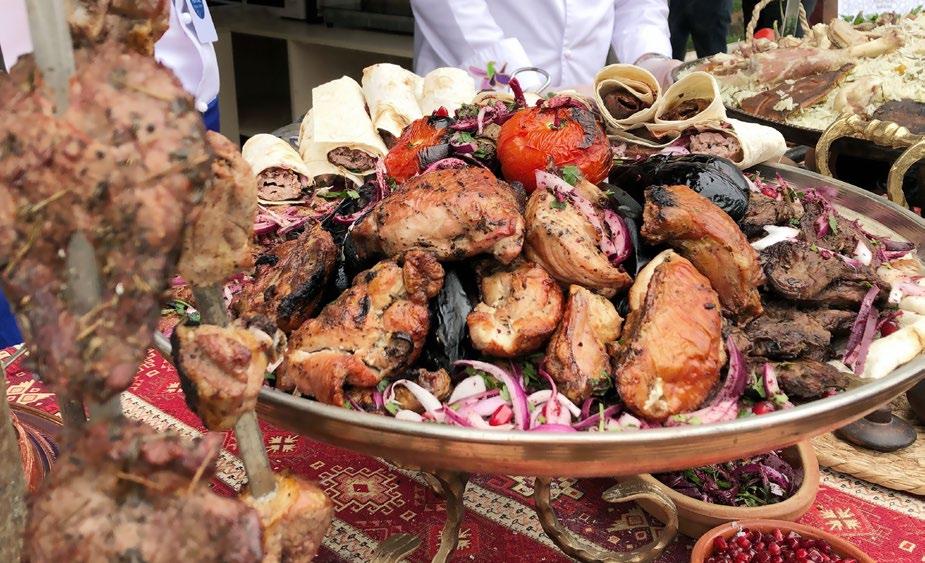

CUISINE & WINE
Known as a greenhouse of the USSR, Azerbaijan is a great example of sustainable and organic production of food . Every region has its specialities and is famous for the products that are truly the best of their kind – potatoes from Gadabey, variety of citrus fruits from Lankaran, pomegranate from Goychay, watermelon from Sabirabad, apples from Quba or tomatoes from Zira . Azerbaijan’s unique geography and location have resulted in a cuisine influenced not just by its varied ingredients, but the tastes of many peoples’ travelling along the Silk Road . So it’s full of surprising flavours and combinations! One should definitely try essentials of Azerbaijani cuisine such as plov: which is made of rice mixed with herbs, dried fruits, meat or fish and other local ingredients, dolma: made of grape leaves stuffed with various fillings of meat and rice, herbs or nuts; qutabs: a sort of flatbread stuffed with different fillings – such as meat, herbs, cheese or pumpkin – and cooked on a cast iron disk called a saj . In terms of grape varieties, 54 ‘active’ indigenous varietals have been identified. Of the indigenous varietals, the two are the white Bayan Shira, which reminds a little of Garganega, and the red Madrasa, which has something of the Grenache (or Cannonau) to it .
Azerbaijan is among the thriving viticultural centres of the Caucasus region . Most major wine producers fall geographically along three main ‘routes’ that fan out from Baku . North along the Caspian Shoreline; west through ‘Shirvan’ along a beautifully varied road that follows the foothills of the Greater Caucasus; west on a more southerly route through the centre of the country via historic Ganja .
To celebrate its contribution to promoting viticulture, winemaking and wine tourism, ATB has been granted a number of prizes by the Council of Europe and the European Institute of
Cultural Routes . Local bars and restaurants serve all sorts of Azerbaijani wine but, naturally, they taste even better when served at the top of vineyards in the regions paired with local delicacies .
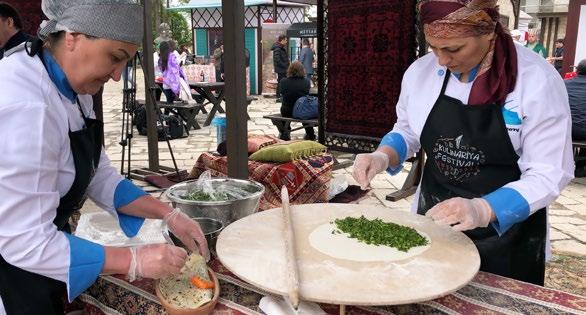

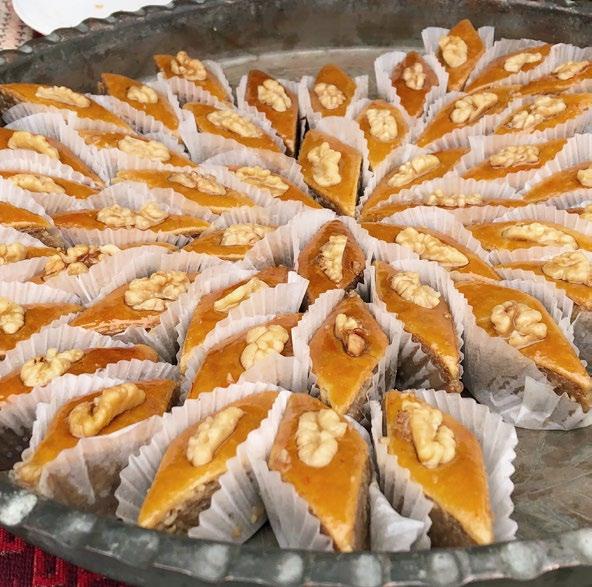
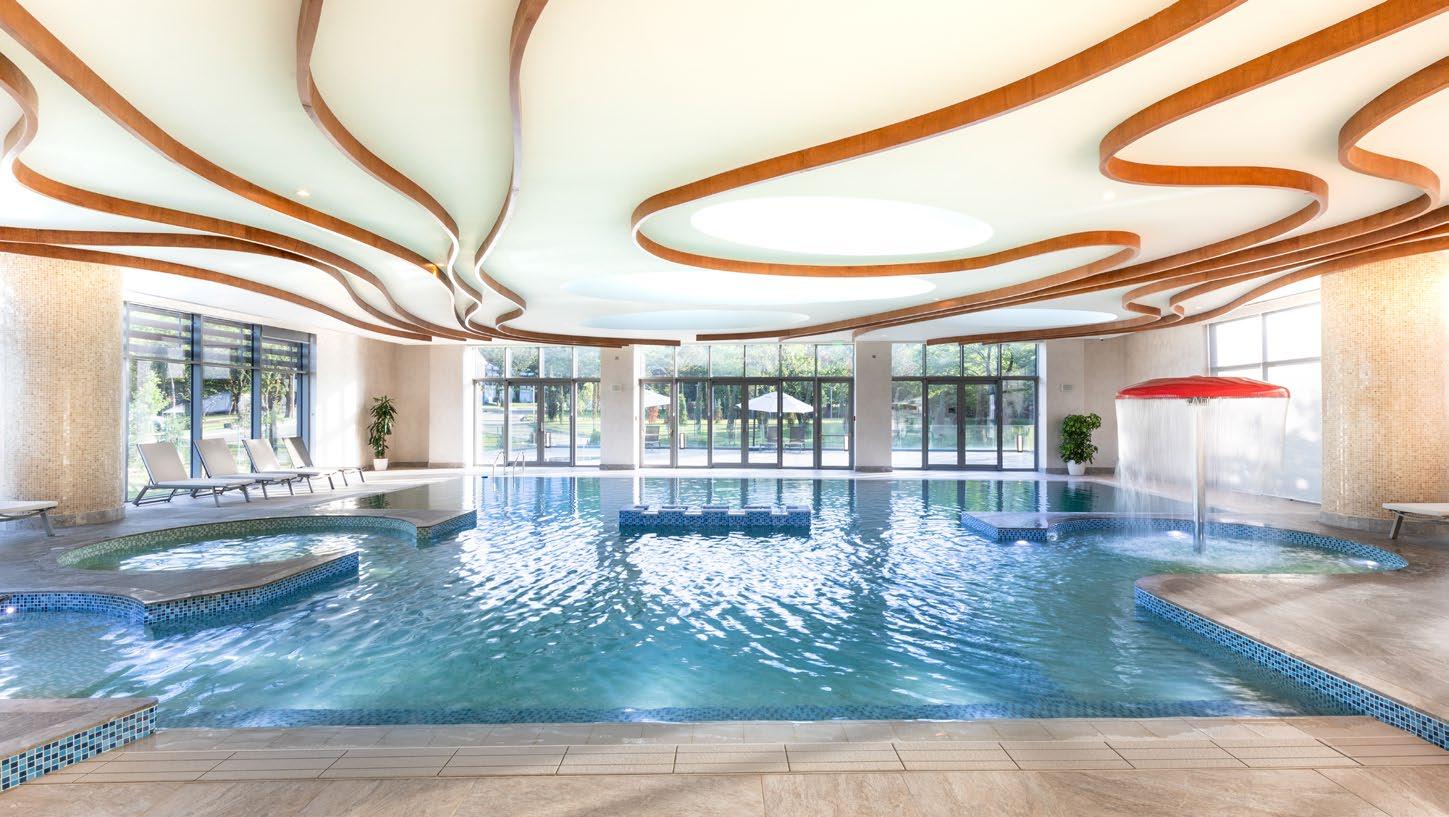
HEALTH & WELLNESS
The current period requires tourism destinations to think of the environment, sustainability and reconnecting with nature as key priorities while improving or creating new offerings for travellers . Azerbaijan, in its turn, has more than one type of natural assets to develop sustainable and immersive experiences . Along with exhilarating outdoor activities such as hiking, birdwatching, camping and skiing, travellers here may also choose to restore their mind and soul at renowned resorts through multiple types of wellness procedures . One such experience is taking salt therapy offered in health resorts all over Azerbaijan . However, Duzdag, or ‘Salt Mountain’, in Nakhchivan, a former salt mine converted into a sanatorium, provides the most authentic experience . The mountain is thought to contain about 130 million tonnes of pure natural salt, which has the ability to cure a number of ailments such as allergies, asthma and other respiratory illnesses as well as aging skin . The Duzdag Physiotherapy Centre consists of tunnels carved 300 metres into the mountain, 110 metres below the ground . Visitors can spend a night in one of the underground rooms in these tunnels and enjoy not only the restorative powers of salt, but also the calmness and peace away from the everyday
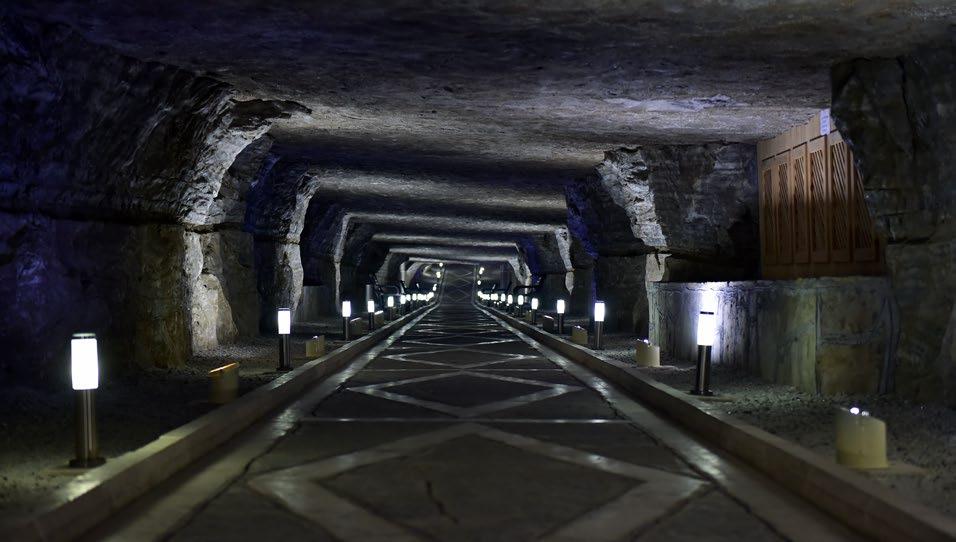

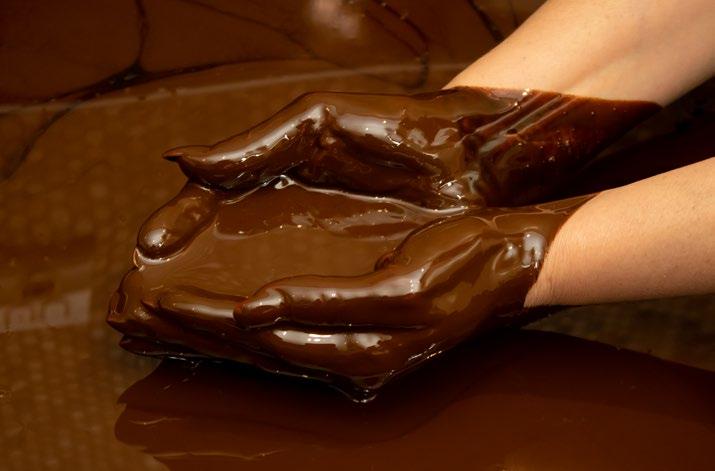
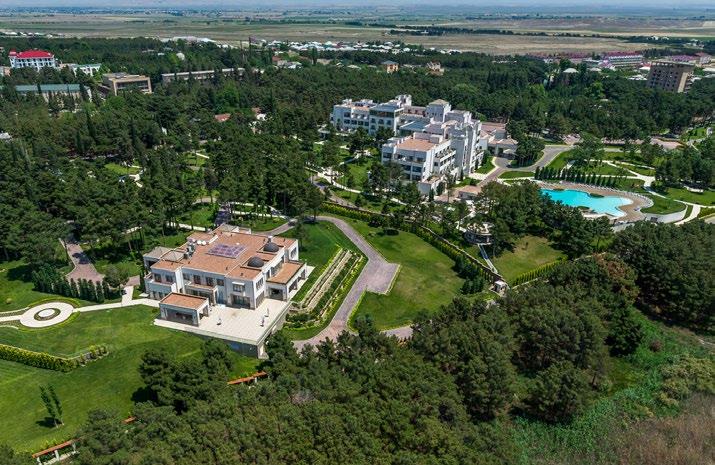
hustle . A well-equipped resort is located above ground 2 km away from the tunnels .
Other natural wonders of Azerbaijan are its thermal baths and springs . There are more than 30 deposits of thermal mineral waters with different concentrations, sulphur levels and organic substances in the Caucasus . Three of them are located near the charming city of Gabala situated at the foot of the Caucasus Mountains, and are the basis of balneotherapy treatments at several world-class health and wellness resorts in the city .
Several villages in the Lankaran region to the south of the country are also famous for their thermal water springs, with several sanatoriums offering relaxing and therapeutic baths of the hot, mineral-rich water flowing naturally from underground .
Another must-visit place in terms of thermal resources is the village of Istisu in the Kalbajar district of the liberated Karabakh region . Restoration is underway in this region, where a sanatorium used to treat a variety of illnesses related to the nervous system, skin, muscles and bones as well as respiratory, diabetes, digestive and kidney problems . Last but definitely not least, the curative effect of the famous oil baths in Naftalan leaves visitors in awe each time . According to popular legend, this oil’s healing properties were first spotted by a merchant travelling along the Silk Road who left one of his sickly camels to die by an oily pool and returned to find it fully recovered. Different from conventional industrial oils, this one has a unique chemical composition, thanks to which Naftalan, located around 300 km from Baku, has become one of the leading health and wellness destinations of Azerbaijan .
Having the power to heal more than 70 diseases, such as muscle, skin, bone and joint pains, as well as gynaecology and neurology problems, the crude oil baths and individual treatment sessions are an ideal experience for those in search of healing . Treatment typically involves taking daily oil baths for at least a week at one of the city’s many wellness centres .
A comprehensive city branding strategy has recently been developed for Naftalan city to increase its potential to attract visitors and boost tourism while supporting businesses here . Visitors can now enjoy cycling paths and an Oil Museum pavilion assisted by a Tourism Information Centre and wayfinding signs. WELCOME!
In the words of Florian Sengstschmid, Chief Executive Officer Azerbaijan Tourism Board (АТВ): «Azerbaijan – a land of dramatic landscapes, ancient culture and XXI century ambition» . The republic is located in a fascinating part of the world, between Europe and Asia, comprising of a cultural and geographical fusion . The Silk Road has left a legacy here of tolerance, multiculturalism and incredible hospitality .

The capital Baku is a vibrant cosmopolitan city that has both modern and ancient architecture, great nightlife, and restaurants with very delicious local food . Trips to the regions with lush nature are a perfect addition to the days spent in Baku . Areas of Azerbaijan offer newly established hiking trails and ski resorts with picturesque nature in the Caucasus mountains .
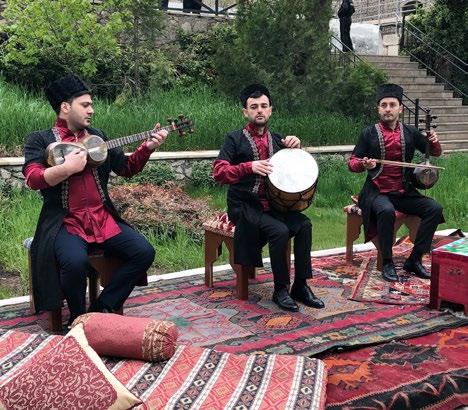
www.tourismboard.az
Inara Kyazimova, images by ATB & Dario Zoric







